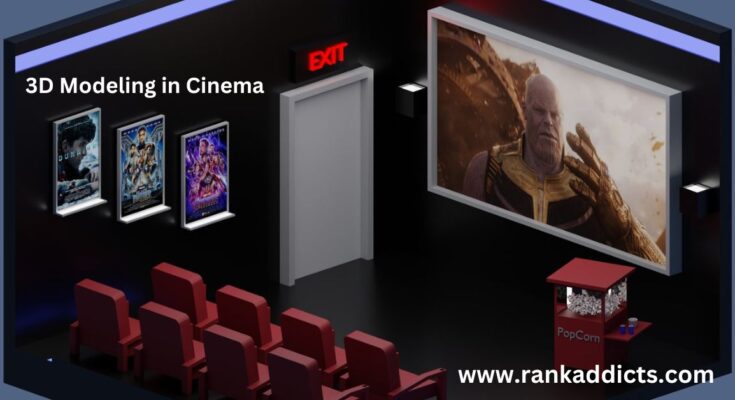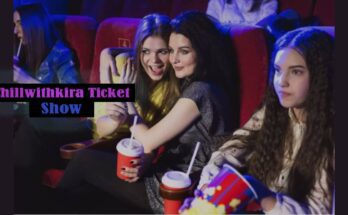Introduction to 3D Modeling in Cinema
Lights, camera, action! Step into the mesmerizing world of cinema, where iconic movie characters come to life through the magic of 3D Modeling. Join us on a thrilling journey as we explore the evolution of 3D Modeling in movies, uncover step-by-step guides to creating stunning models, and discover how this technology has revolutionized the film industry. Get ready to dive deep into the realm where creativity knows no bounds and imagination runs wild.
The Evolution of 3D Modeling in Movies
The evolution of 3D Modeling in movies has been nothing short of revolutionary. It all started with basic wireframe models that lacked the realism we see today. As technology advanced, so did the capabilities of 3D modeling software, allowing for intricate details and lifelike textures to be applied.
Each year, filmmakers have pushed the boundaries of what is possible with 3D Modeling. Characters once confined to two dimensions on paper now come alive in stunning three-dimensional form on the big screen. The level of detail that can be achieved today is genuinely mind-blowing.
Thanks to advancements in rendering techniques and hardware, 3D models now look more realistic than ever before. Lighting, shading, and texturing are crucial in bringing these digital creations to life. Directors and animators can now create worlds and characters that were previously unimaginable.
This ongoing evolution shows no signs of slowing down as artists continue to explore new techniques and technologies to push the limits of what is achievable through 3D Modeling in cinema.
Step-by-Step Guide to Creating 3D Models
Are you ready to dive into the fascinating world of creating 3D models for movies? Let’s look at the step-by-step process that brings iconic characters to life on the screen.
First, research your character thoroughly. Understand their personality, characteristics, and unique features that make them stand out.
Next, sketch out your initial ideas on paper or digitally. This will help you visualize how the character will look in 3D space.
Once you have a clear concept, start sculpting your character’s basic shapes and forms using specialized software like Maya or ZBrush.
Refine your model by adding textures, colors, and accessories to make it more realistic and lifelike.
Remember lighting and shading! These elements play a crucial role in enhancing the overall appearance of your 3D model.
Render your model from different angles to ensure it looks excellent from every perspective before presenting it to the world.
Tips and Tricks for Realistic Renderings
When creating realistic renderings of 3D models, attention to detail is key. Start by studying the anatomy and textures of your character or object. Understanding how light interacts with different surfaces will elevate the realism of your rendering.
Experiment with various lighting setups to find the perfect balance between shadows and highlights. Utilize tools like ambient occlusion and global illumination for a more natural look. Be bold and use different camera angles and focal lengths to capture your model best.
Consider incorporating depth-of-field effects to add more realism to your renderings. Fine-tune materials and shaders to achieve lifelike textures that mimic real-world surfaces. Post-processing techniques such as color correction and adding atmospheric effects can take your rendering from good to extraordinary.
Famous Movie Characters Brought to Life Through 3D Modeling.
Get ready to be amazed as we dive into the world of iconic movie characters brought to life through the magic of 3D Modeling. From superheroes like Iron Man and Spider-Man to beloved animated characters like Elsa from Frozen, the possibilities for recreating these famous personalities in a digital space are endless.
Through meticulous attention to detail and advanced rendering techniques, talented artists can breathe life into these characters, making them appear almost lifelike on screen. The level of realism achieved through 3D Modeling allows viewers to connect with their favorite characters on a whole new level, immersing themselves in fantastical worlds like never before.
Whether capturing the intricate details of a character’s costume or conveying subtle emotions through facial expressions, 3D Modeling opens up creative possibilities for filmmakers and animators alike. The ability to manipulate lighting, textures, and camera angles further enhances the portrayal of these characters, adding depth and dimension to their on-screen presence.
The Impact of 3D Modeling on the Film Industry
The impact of 3D Modeling on the film industry cannot be overstated. It has revolutionized how movies are made, allowing filmmakers to bring their wildest imaginations to life on the big screen.
With technological advancements, 3D Modeling has opened up a new world of possibilities for creating visually stunning and immersive cinematic experiences. Directors can now visualize their ideas more clearly and execute them with precision.
This technology has also made it possible to create incredibly realistic characters and environments that were once only imaginable. From fantastical creatures to futuristic landscapes, 3D Modeling has pushed the boundaries of what is achievable in filmmaking.
Moreover, 3D Modeling has streamlined production processes, making filmmaking more efficient and cost-effective. It allows for easier collaboration between artists, designers, and directors, leading to smoother workflows and faster turnaround times.
In essence, 3D Modeling has transformed how films are created and elevated storytelling by providing filmmakers with tools to craft visually captivating narratives that captivate audiences worldwide.
Conclusion
As we wrap up our exploration of 3D Modeling in cinema, it’s clear that this technology has revolutionized how movie characters are brought to life on the big screen. From the intricate details of their facial expressions to the fluidity of their movements, 3D Modeling has opened up a whole new realm of possibilities for filmmakers.
By delving into 3D Modeling, artists and animators can push boundaries and create unforgettable cinematic experiences for audiences worldwide. The impact of these advancements extends far beyond entertainment; it influences how stories are told, and emotions are conveyed through visual storytelling.
3D modeling stands at the forefront as a game-changer in an industry that is constantly evolving with technological innovations. Its ability to blend creativity with cutting-edge technology is reshaping the landscape of filmmaking, paving the way for endless opportunities and pushing artistic boundaries further than ever before.
FAQs,
Q: What software is commonly used for creating 3D models in movies?
A: Some popular software includes Autodesk Maya, Cinema 4D, Blender, and ZBrush.
Q: How long does creating a detailed 3D model of a movie character take?
A: The time can vary depending on the character’s complexity and the artist’s skill level. It can range from a few days to several weeks.
Q: Can anyone learn how to create 3D models for movies?
A: Yes, with dedication and practice, anyone can learn how to create stunning 3D models for movies.
Q: Is 3D Modeling changing the way movies are made?
A: Absolutely! 3D Modeling has revolutionized special effects and character design in modern cinema.
Exploring the world of cinema through the lens of 3D Modeling reveals endless possibilities for creativity and storytelling. As technology advances, we can only imagine what incredible cinematic experiences lie ahead. Dive into this exciting realm where imagination knows no bounds!




